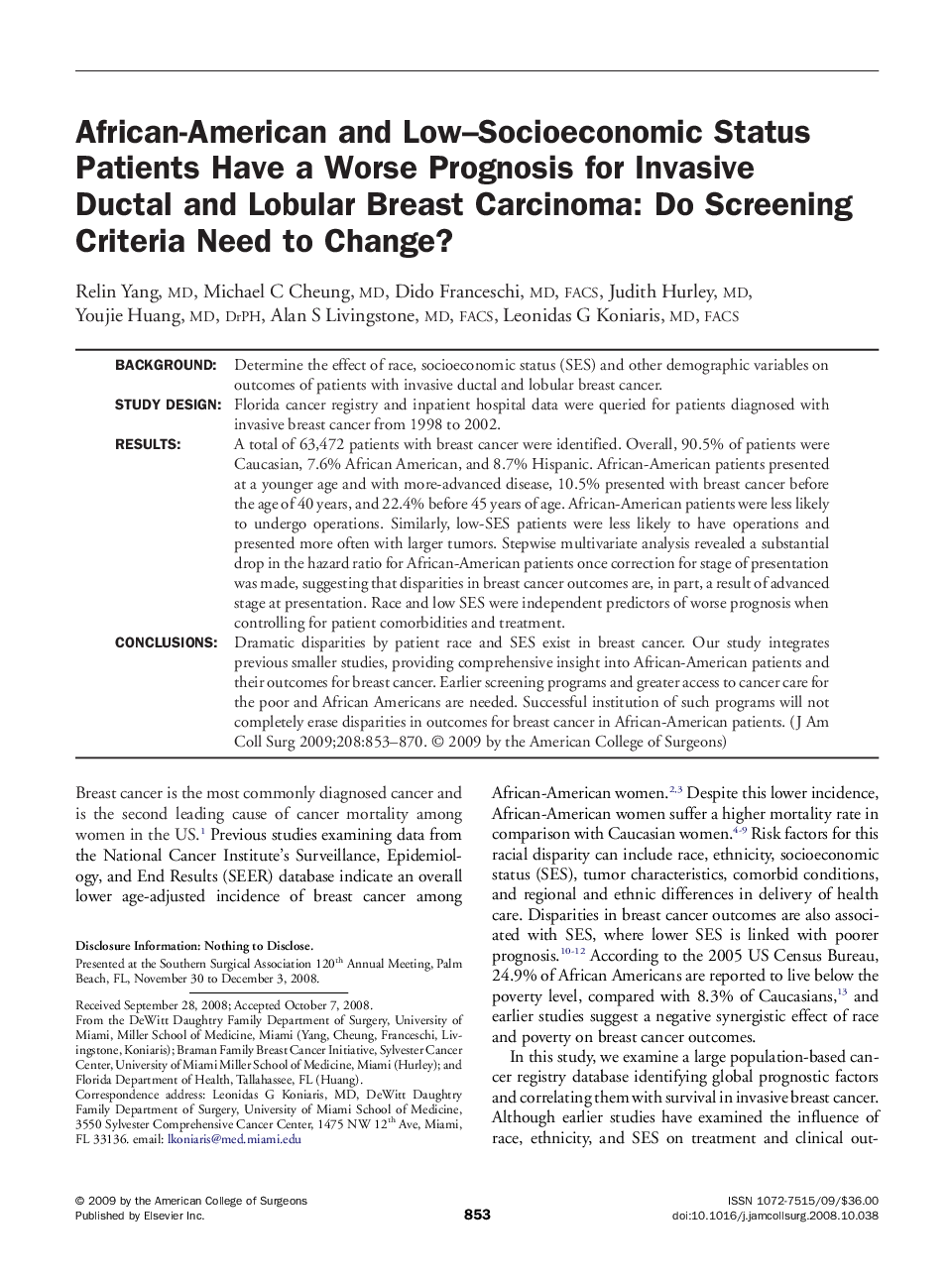| Article ID | Journal | Published Year | Pages | File Type |
|---|---|---|---|---|
| 4293886 | Journal of the American College of Surgeons | 2009 | 16 Pages |
BackgroundDetermine the effect of race, socioeconomic status (SES) and other demographic variables on outcomes of patients with invasive ductal and lobular breast cancer.Study DesignFlorida cancer registry and inpatient hospital data were queried for patients diagnosed with invasive breast cancer from 1998 to 2002.ResultsA total of 63,472 patients with breast cancer were identified. Overall, 90.5% of patients were Caucasian, 7.6% African American, and 8.7% Hispanic. African-American patients presented at a younger age and with more-advanced disease, 10.5% presented with breast cancer before the age of 40 years, and 22.4% before 45 years of age. African-American patients were less likely to undergo operations. Similarly, low-SES patients were less likely to have operations and presented more often with larger tumors. Stepwise multivariate analysis revealed a substantial drop in the hazard ratio for African-American patients once correction for stage of presentation was made, suggesting that disparities in breast cancer outcomes are, in part, a result of advanced stage at presentation. Race and low SES were independent predictors of worse prognosis when controlling for patient comorbidities and treatment.ConclusionsDramatic disparities by patient race and SES exist in breast cancer. Our study integrates previous smaller studies, providing comprehensive insight into African-American patients and their outcomes for breast cancer. Earlier screening programs and greater access to cancer care for the poor and African Americans are needed. Successful institution of such programs will not completely erase disparities in outcomes for breast cancer in African-American patients.
